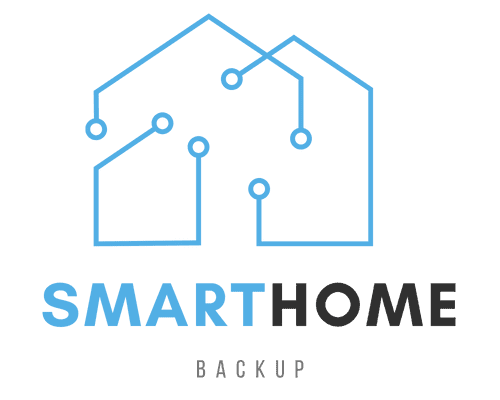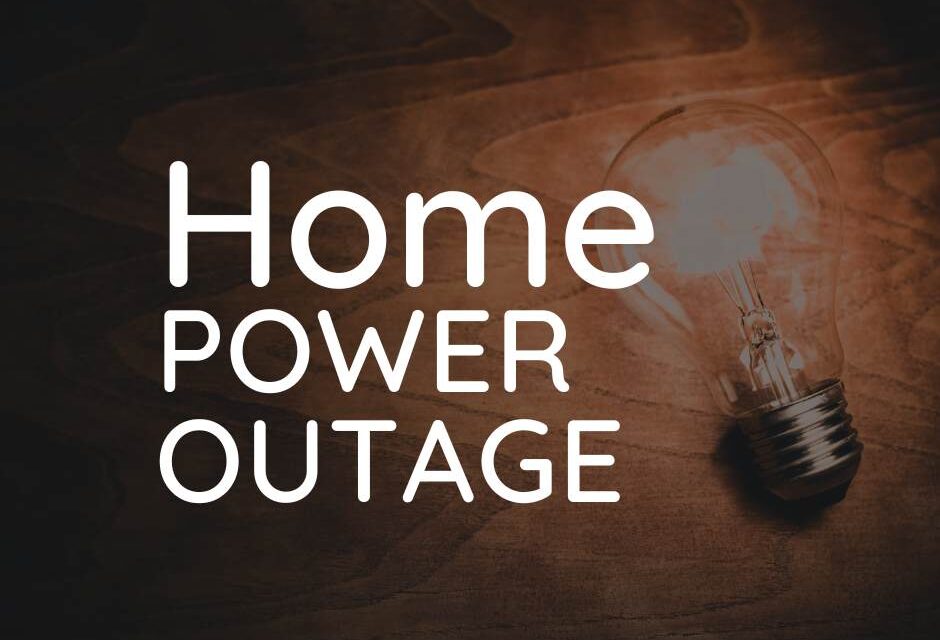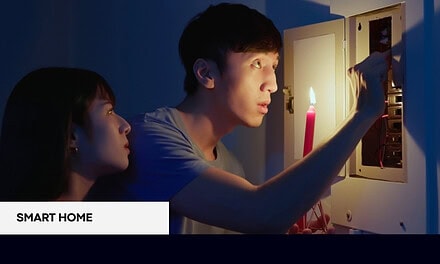Meta Description: Smart homes become ‘dumb’ during power outages. Discover what happens to your connected devices and how to build a resilient smart home system.
Picture this: You’ve invested thousands of dollars transforming your house into a cutting-edge smart home. Your lights respond to voice commands, your thermostat learns your schedule, your security cameras watch over your property 24/7, and your smart refrigerator even orders groceries for you.
Then the power goes out.
Suddenly, your “smart” home becomes surprisingly dumb. Your $300 smart doorbell can’t notify you of visitors. Your $500 smart thermostat can’t regulate temperature. Your entire home security system goes dark. The very technology that promised to make your life easier has left you more vulnerable than ever.
If you’re a smart homeowner, you need to face an uncomfortable truth: when the grid fails, your smart home loses the fight every single time.
The Reality Check: What Really Happens When Smart Homes Lose Power
Your Connected Devices Become Expensive Paperweights
When power outages strike, here’s what happens to your smart home investments:
Smart Security Systems: Your $1,000+ security setup—cameras, smart locks, motion sensors, and alarms—all go offline within minutes. Battery backups in most consumer devices last only 4-8 hours at best. Professional monitoring companies can’t reach your system, leaving your home completely unprotected.
Smart Thermostats: That intelligent climate control system you love? It’s powerless to maintain comfortable temperatures. During summer outages, homes can reach dangerous temperatures within hours. In winter, pipes can freeze and burst, causing thousands in damage.
Smart Appliances: Your connected refrigerator can’t preserve food without power. The average American family loses $200-400 worth of groceries during extended outages. Smart water heaters, dishwashers, and washing machines become useless until grid power returns.
Home Automation Systems: Voice assistants, smart speakers, automated lighting, and motorized blinds all require constant power. Your carefully programmed routines and schedules disappear the moment the electricity stops flowing.
The Hidden Costs Add Up Fast
According to the U.S. Energy Information Administration, the average American home experiences 1.3 power outages per year, lasting an average of 3.5 hours each. But severe weather events can extend outages for days or even weeks.
Here’s what these outages really cost smart homeowners:
- Food spoilage: $200-400 per outage for a family of four
- Equipment damage: Power surges when electricity returns can destroy sensitive electronics, costing $500-2,000
- Security vulnerabilities: Homes without power are 3x more likely to experience break-ins
- Productivity losses: Remote workers lose an average of $150-300 per day during outages
- Comfort and health impacts: Extreme temperatures can pose serious health risks, especially for elderly family members
Why Traditional Backup Solutions Fall Short for Smart Homes
Portable Generators: Loud, Limited, and Legally Restricted
Most homeowners think a portable generator solves their backup power problems. Unfortunately, portable generators create more issues than they solve for smart home owners:
Noise Pollution: Generators produce 70-80 decibels of noise—equivalent to city traffic. Many neighborhoods have noise ordinances that restrict generator use, especially at night when you need power most.
Fuel Dependency: Gasoline generators require constant refueling every 8-12 hours. During widespread outages, gas stations often close or run out of fuel, leaving you stranded.
Limited Capacity: Most portable generators can’t power your entire smart home system. You’ll have to choose between keeping your refrigerator running or powering your security system—not both.
Safety Hazards: Carbon monoxide poisoning from generators kills dozens of Americans every year. They must be operated outdoors and away from windows, limiting where you can use them.
Standby Generators: Expensive and High-Maintenance
Whole-house standby generators seem like the perfect solution until you consider the real costs:
Installation Costs: Professional installation runs $3,000-6,000 on top of the $4,000-8,000 generator cost.
Maintenance Requirements: These systems require professional maintenance twice yearly, costing $200-400 each service. Neglect maintenance, and your warranty becomes void.
Fuel Costs: Natural gas and propane costs continue even when you’re not using the generator. Monthly connection fees and higher usage rates add $50-100 to your monthly utility bills.
Reliability Issues: Standby generators fail to start 20-25% of the time during actual emergencies due to maintenance issues, old fuel, or mechanical problems.
The Smart Solution: Energy Independence Through Innovation
While traditional backup power options have significant drawbacks, smart homeowners are discovering a better approach: true energy independence that doesn’t rely on fuel, maintenance, or the electrical grid.
What Real Energy Independence Looks Like
Imagine having a backup power system that:
- Starts automatically the moment power goes out
- Runs silently without disturbing neighbors
- Requires no fuel, maintenance, or monthly costs
- Powers your entire smart home for days or weeks
- Actually saves you money on monthly electric bills
This isn’t wishful thinking—it’s exactly what thousands of American families have achieved by building their own reliable backup power systems.
The Lost Generator: A Game-Changing Approach
The Lost Generator represents a revolutionary approach to home backup power that specifically addresses smart home needs. Unlike traditional generators that burn fuel and require constant maintenance, this innovative system harnesses natural energy sources that are available 24/7, completely free.
Here’s why smart homeowners are choosing this approach:
Silent Operation: Your neighbors will never know your backup system is running. No noise complaints, no legal issues, no disturbed sleep.
Zero Fuel Costs: The system runs on energy sources that never need refueling, refilling, or replacement. Your monthly operating cost is literally zero.
Unlimited Runtime: While gas generators run out of fuel and batteries eventually die, this system can operate indefinitely as long as natural energy sources are available.
Smart Home Optimized: The system provides clean, stable power that’s safe for sensitive electronics, smart devices, and computer equipment.
Maintenance-Free: No oil changes, no filter replacements, no professional service calls. The system runs for years without any maintenance requirements.
Real Results from Real Homeowners
Sarah M. from Texas installed her backup power system just months before the devastating 2021 winter storm that left millions without electricity for days. While her neighbors struggled without heat, light, or communication, her smart home continued operating normally throughout the entire crisis.
“My smart security system kept recording, my electric heat pump maintained comfortable temperatures, and my internet router stayed online so I could work remotely,” Sarah reports. “The system more than paid for itself during that one event.”
Mark and Jennifer K. from Florida have used their backup system through three hurricane seasons. “Hurricane Ian took out power to our entire neighborhood for eight days,” Mark explains. “Our system kept everything running—refrigerator, air conditioning, security cameras, even our electric vehicle charger. We became the neighborhood charging station for everyone’s phones and devices.”
Building Your Power-Independent Smart Home
The future belongs to homeowners who take control of their energy security. Climate change is making power outages more frequent and severe. The aging electrical grid struggles to meet increasing demand. Energy costs continue rising year after year.
Smart homeowners are responding by building energy-independent homes that don’t rely on the electrical grid for security, comfort, or daily operations.
Why Now Is the Perfect Time to Act
Energy independence isn’t just about backup power—it’s about taking control of your family’s security and financial future. Every month you delay means:
- Higher electricity bills as energy costs increase
- Continued vulnerability to power outages and their hidden costs
- Missing out on the peace of mind that comes with true energy security
The technology exists today to power your entire smart home independently of the electrical grid. The question isn’t whether you can afford to build backup power—it’s whether you can afford NOT to.
Ready to learn how The Lost Generator can transform your smart home into a power-independent fortress? This comprehensive guide reveals the exact methods thousands of families are using to achieve complete energy independence while saving money every single month.
Your smart home deserves smart backup power. Discover how to build a system that wins every time the grid fails.
[Call to Action: Click here to discover The Lost Generator blueprint and join thousands of families who’ve achieved true energy independence]





